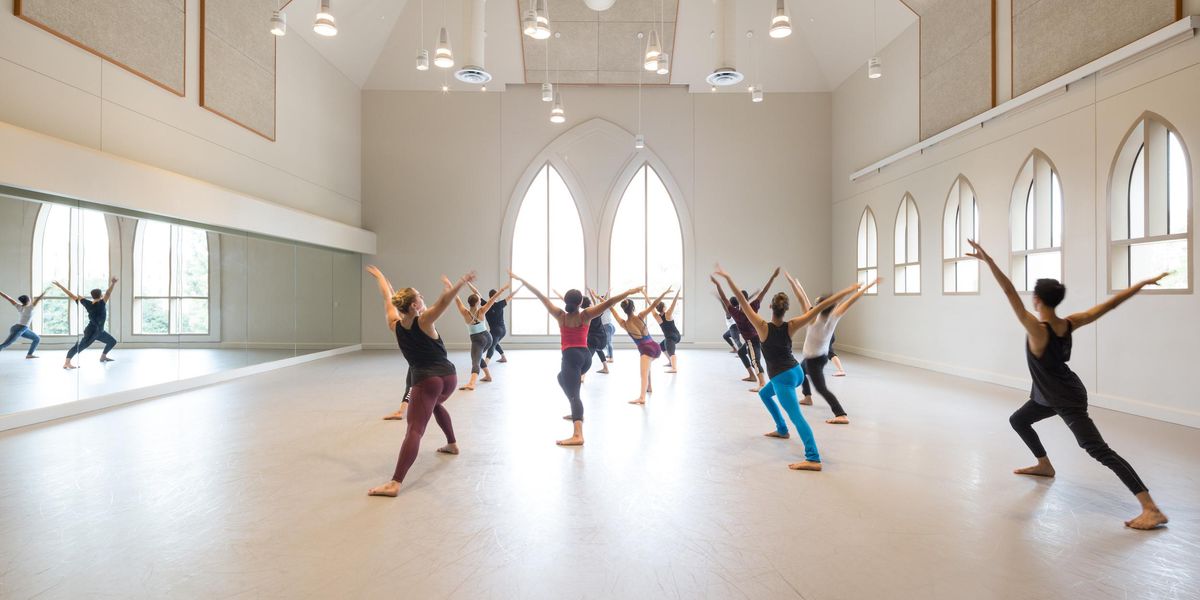ABT’s Golden Cockerel: The Sublime and the Ridiculous
The American premiere of Alexei Ratmansky’s Golden Cockerel for American Ballet Theatre opened Monday night at the Metropolitan Opera House. Based on a folk tale by Pushkin about a foolish tsar, it was first produced as an opera by Diaghilev’s Ballets Russes in 1914, but it was restaged as a ballet by the original choreographer, Michel Fokine in 1937. In Ratmansky’s hands, there is much flair in the movement and humor in the acting. Not surprisingly, the production is a mix of the sublime and the ridiculous.
Ratmansky leading Cassandra Trenary as the cockerel in rehearsal, photo by Susie Morgan Taylor
Sublime:
Veronica Part
’s dancing as the alluring, elusive Queen of Shemakhan. Using her length elegantly, whether vertical or lounging on the ground, she lends a seductive flair to Ratmansky’s twisty choreography. Her dancing is gloriously seamless throughout.
Ridiculous:
A story in which a tsar cannot stay awake long enough to know when to go into battle. Guest artist Gary Chryst, former star of the Joffrey Ballet, brings style and precision to this cartoon character, but I’d rather see him as the conniving Charlatan in Petrouchka than the doddering Tsar Dodon.
Sublime:
The way Cory Stearns creeps around, swishing his cape, as the Astrologer. He too is tall and uses his long limbs to dash across the space, all bent over. His hands mold empty space until magically the golden cockerel appears, as though it were clay being sculpted. (In the original 1914 opera, the bird was merely a prop.)
Ridiculous:
Tsar Dodon is really dopy and sexist. To describe how much he’s attracted to the Queen, his hands indicate the shape of an hourglass figure. There’s got to be another way to express attraction other than that old reductive cliché.
Sublime:
The two sons are dopey too, but the actual dancing of Jeffrey Cirio and Joseph Gorak is pretty great. Cirio’s leaps are sturdy and ebullient, while Gorak is a more lyrical warrior.
Ridiculous:
The tsar barely has time to absorb that both his sons have died in battle before he gets all wound up at the sight of the exotic Queen.
Sublime:
The sets and costumes by Richard Hudson, after Natalia Goncharova, give off a bold, primitive/innocent whiff of the Russian avant-garde. The effusion of yellows, reds and greens dazzle the eye in every scene. The peasant women’s dresses all have different patterns and colors. (What a relief—I get tired of looking at a ballet corps that’s all dressed the same.) The ragged moon in the battlefield is blood red. (All costumes and sets are borrowed from the Royal Danish Ballet, which premiered Ratmansky’s version in 2012.)
Ridiculous:
The opera, written in 1907, was banned at first because Tsar Nicholas II interpreted it as a protest against himself.
Skylar Brandt as the cockerel and Duncan Lyle as the Astrologer, photo by Fabrizio Ferri
Sublime:
The music! Rimsky-Korsakov’s score is delicate, dreamy and mysterious, with Eastern-sounding strains. The plucked motif for the golden rooster sends him/her into a staccato rhythm—just right for a cuckoo clock that strikes when the Tsar needs to wake up and fight off enemies. Skylar Brandt infuses Ratmansky’s sharp angles—like a wind-up toy gone made—with an oblivious sort of power. This bird is the opposite of the languid Queen.
Ridiculous:
The intermission. I mean, it’s always good to have a break, but in this particular intermission it was hard to muster any curiosity about what comes next.
Sublimely lethal:
The only really dramatic moment is when the music builds to a crescendo as the crazy little cockerel mounts the Dodon’s shoulders and, with one swift peck, does away with him.
Sublime:
Martine Van Hamel as Amelpha, the tsar’s housekeeper, has her Lady Capulet moment when the tsar dies. Although grief stricken, she drinks a bit too much and gets deliciously tipsy. (Anyone remember how hilarious Van Hamel’s drunken stepmother was in Kudelka’s Cinderella?)
Irina Baronova as the Queen in the 1937 version, photo Gordon Anthony
Not quite sublime:
The ending, in which the Astrologer suggests that all the characters except himself and the Queen are figments of the imagination. It’s a bit reminiscent of Fokine’s Petrouchka, which leaves us wondering whether the puppet has a human soul or not. But The Golden Cockerel is no Petrouchka, in either choreography or emotional impact.




